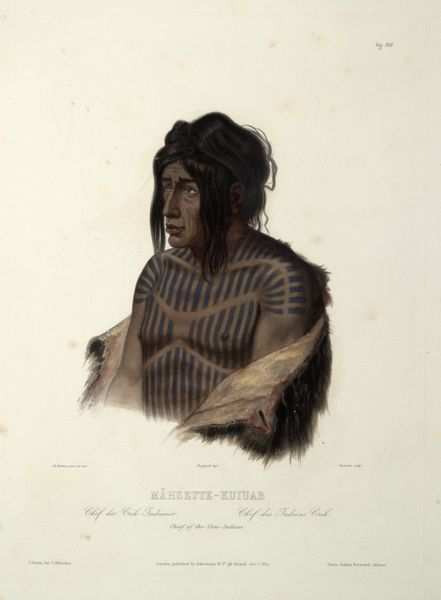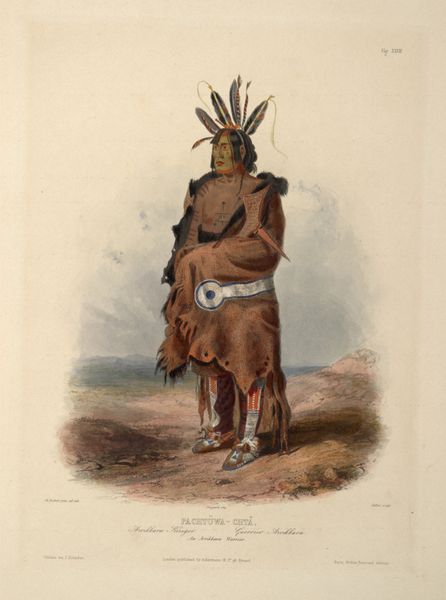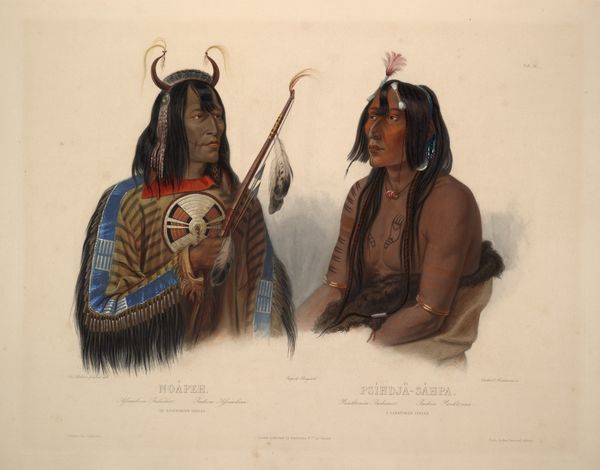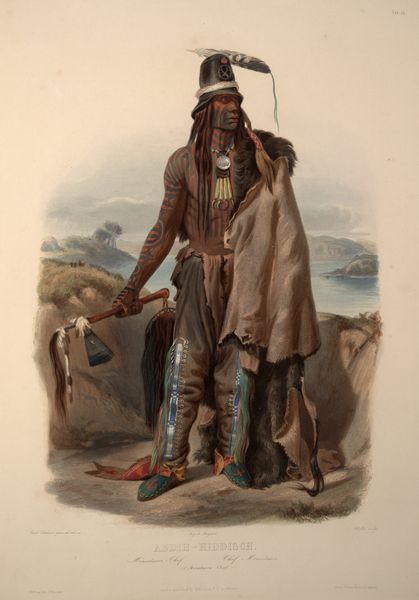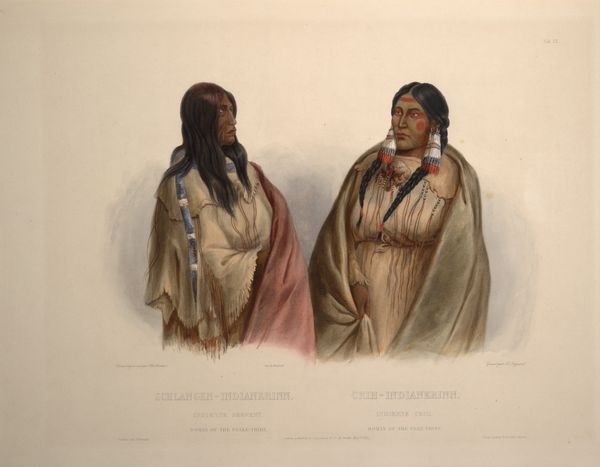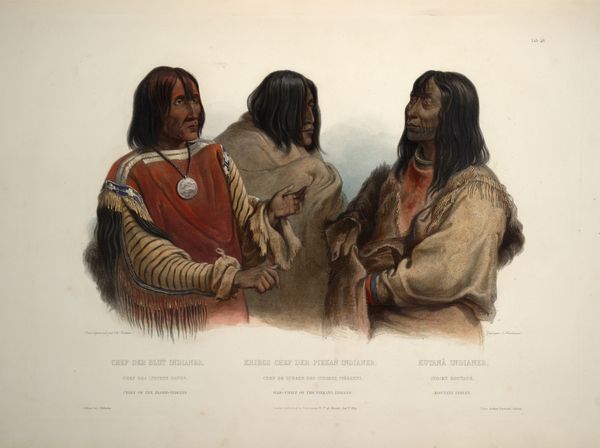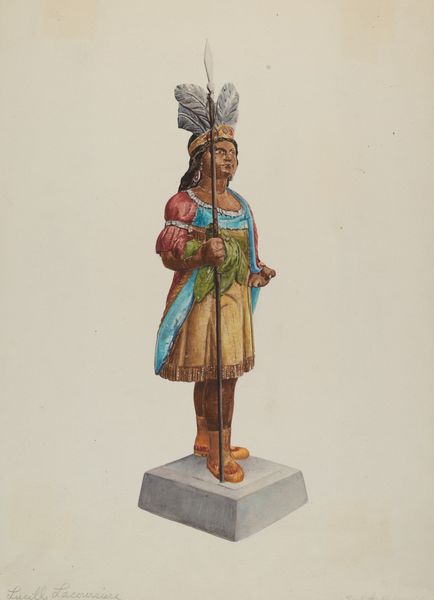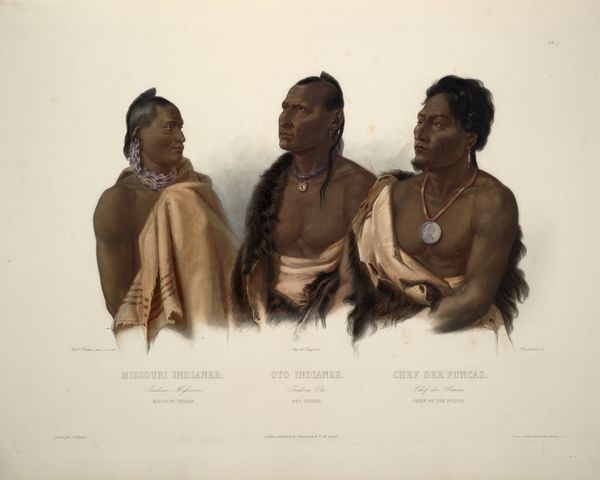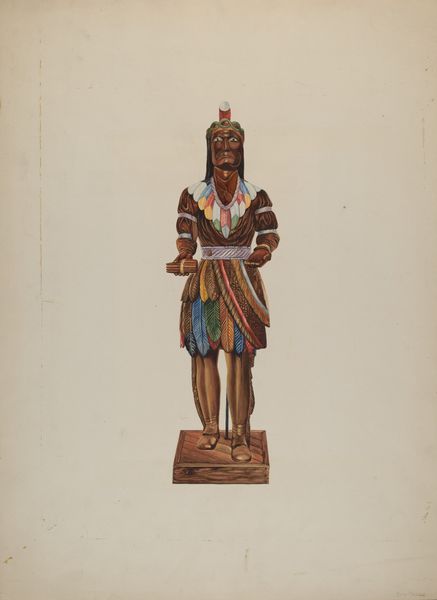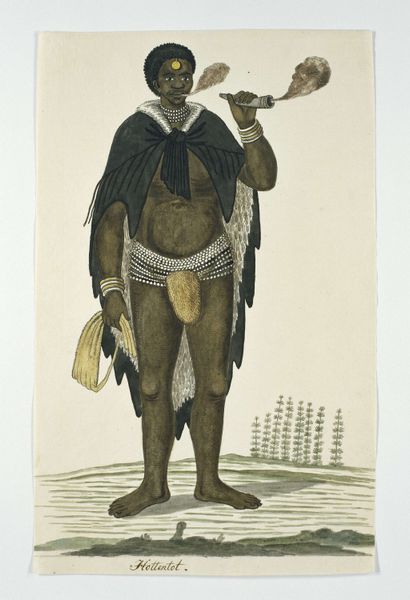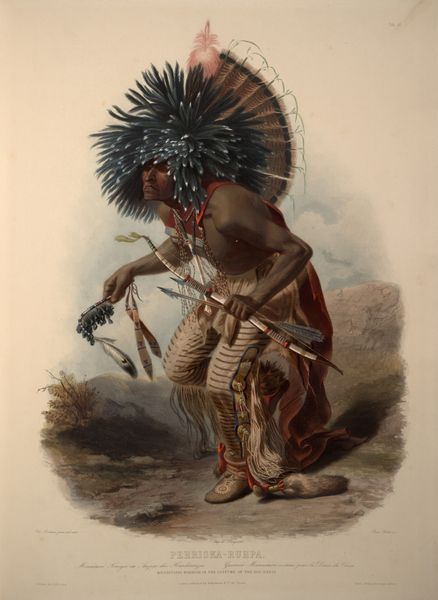
Mándeh Páhchu, a Young Mandan Indian, plate 24 from Volume 1 of 'Travels in the Interior of North America' 1843
0:00
0:00
karlbodmer
Private Collection
drawing, paper
#
portrait
#
drawing
#
charcoal drawing
#
paper
#
portrait drawing
#
watercolour illustration
#
watercolor
Copyright: Public domain
Karl Bodmer captured this portrait of Mándeh-Páhchu, a young Mandan Indian, during his travels in the early 19th century. The figure is adorned with beads and wears a headdress with a feather, symbols deeply rooted in Mandan culture. Consider the symbolism of the feather headdress: from antiquity to modern times, feathers have symbolized power and spirituality. The headdress, similar to the wings worn by classical gods and goddesses, represents a connection to the divine or spiritual realm. This motif transcends time, as it connects to our primal fascination with the ability to transcend earthly bounds and communicate with the divine. It appears again and again in different cultures. The pipe, held so deliberately, might represent peace, unity, and sacred communication. Like the caduceus of Hermes, a symbol of commerce and negotiation, the pipe serves as an instrument of mediation. These symbols echo through history, revealing humanity's universal quest for spiritual understanding and harmony.
Comments
No comments
Be the first to comment and join the conversation on the ultimate creative platform.
